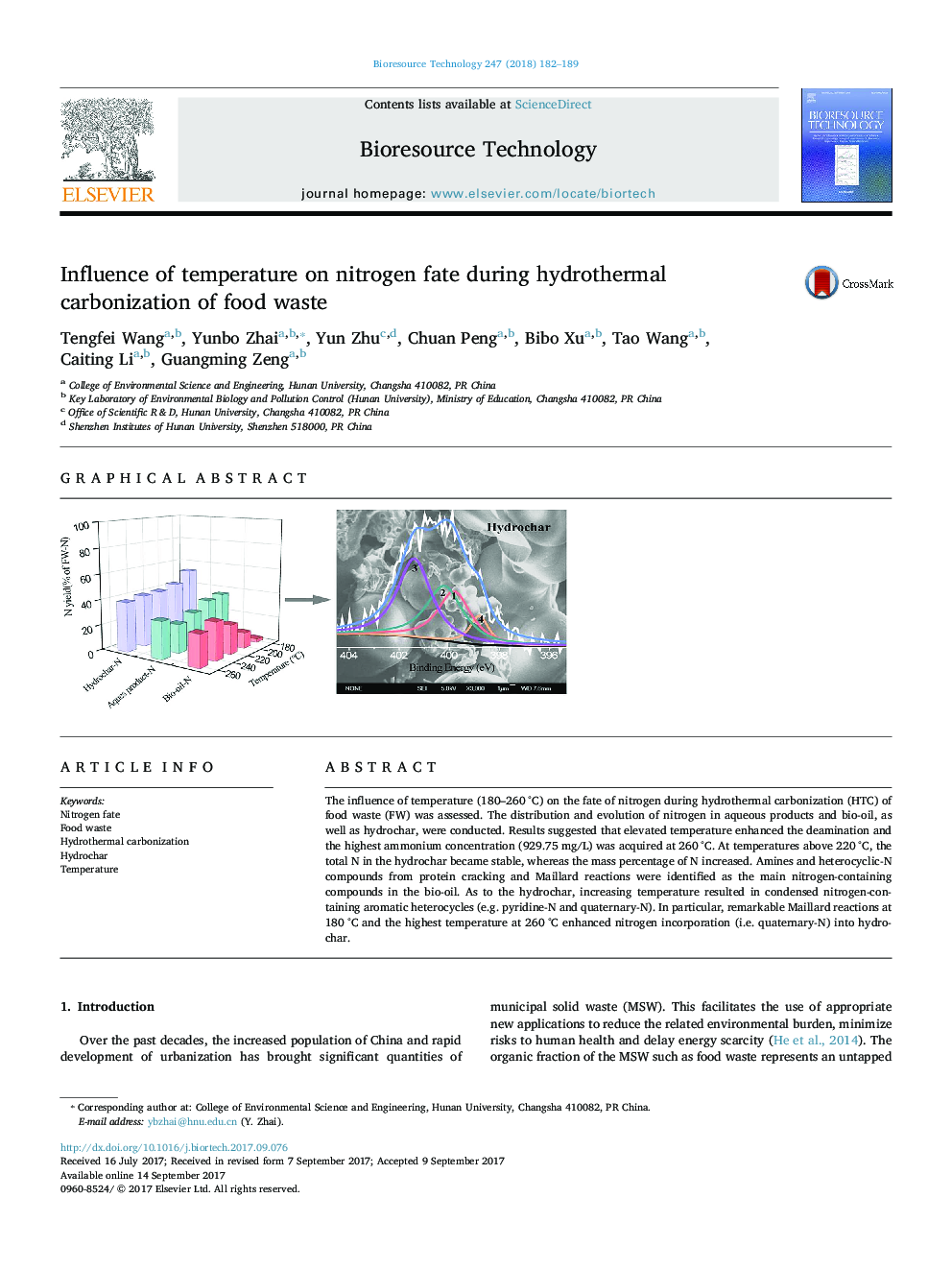| Article ID | Journal | Published Year | Pages | File Type |
|---|---|---|---|---|
| 4996638 | Bioresource Technology | 2018 | 8 Pages |
â¢The nitrogen distribution and evolution in HTC of food waste were investigated.â¢Nitrogen species and amount in products depended on temperature.â¢Amines and N-heterocyclic compounds were identified as main bio-oil-N species.â¢Increasing temperature enhanced incorporation of nitrogen into aromatic heterocycles.
The influence of temperature (180-260 °C) on the fate of nitrogen during hydrothermal carbonization (HTC) of food waste (FW) was assessed. The distribution and evolution of nitrogen in aqueous products and bio-oil, as well as hydrochar, were conducted. Results suggested that elevated temperature enhanced the deamination and the highest ammonium concentration (929.75 mg/L) was acquired at 260 °C. At temperatures above 220 °C, the total N in the hydrochar became stable, whereas the mass percentage of N increased. Amines and heterocyclic-N compounds from protein cracking and Maillard reactions were identified as the main nitrogen-containing compounds in the bio-oil. As to the hydrochar, increasing temperature resulted in condensed nitrogen-containing aromatic heterocycles (e.g. pyridine-N and quaternary-N). In particular, remarkable Maillard reactions at 180 °C and the highest temperature at 260 °C enhanced nitrogen incorporation (i.e. quaternary-N) into hydrochar.
Graphical abstractDownload high-res image (108KB)Download full-size image
